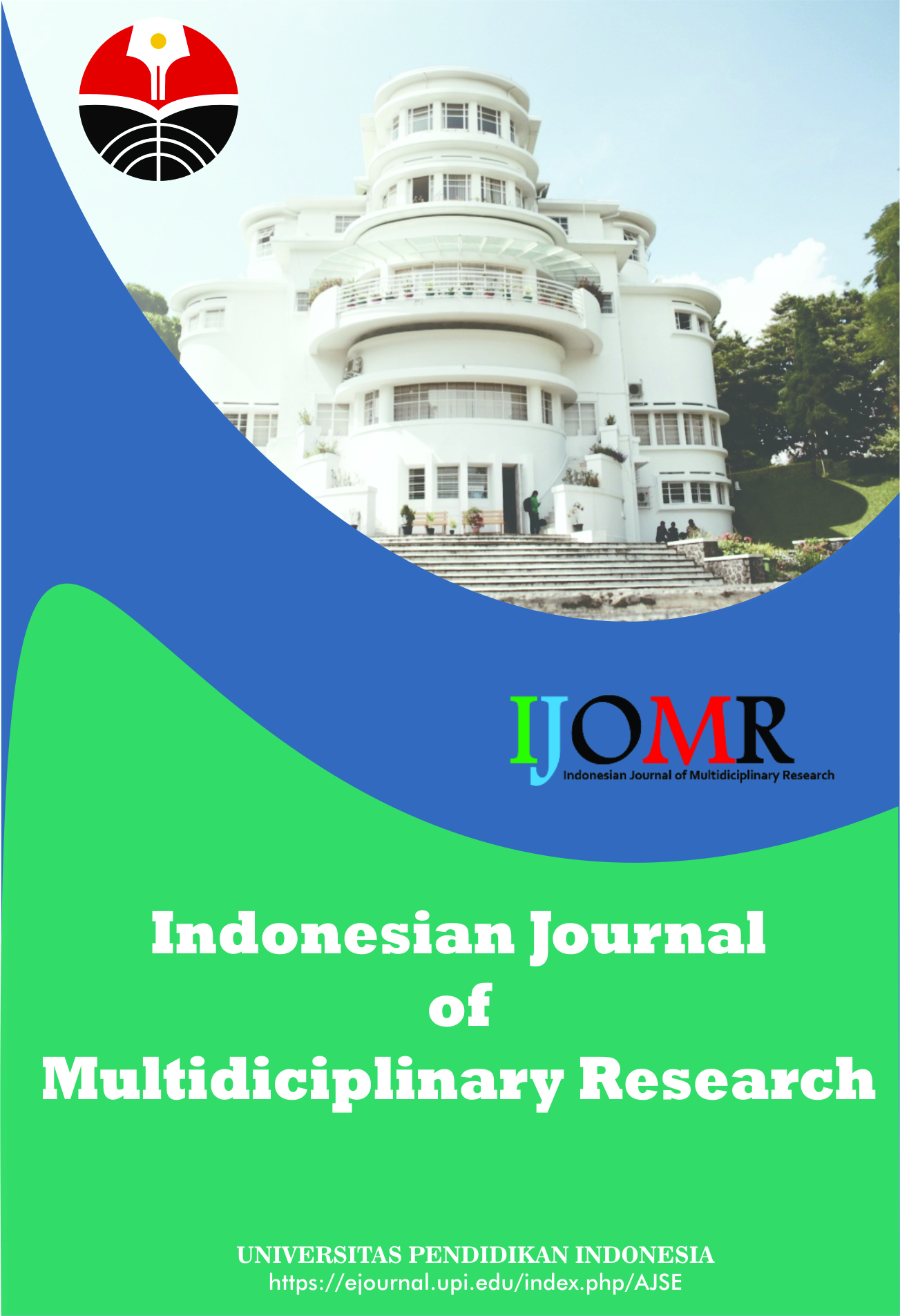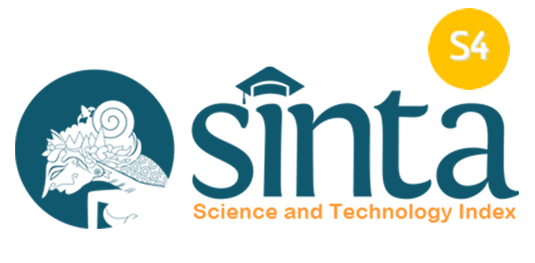Literature Review and Bibliometric Mapping Analysis: Philosophy of Science and Technology Education
Abstract
Keywords
Full Text:
PDFReferences
Al Husaeni, D. F., and Al Husaeni, D. N. (2022). Computational bibliometric analysis of research on science and Islam with VOSviewer: Scopus database in 2012 to 2022. ASEAN Journal of Religion, Education, and Society, 1(1), 39-48.
Al Husaeni, D. F., and Nandiyanto, A. B. D. (2022). Bibliometric using Vosviewer with Publish or Perish (using google scholar data): From step-by-step processing for users to the practical examples in the analysis of digital learning articles in pre and post Covid-19 pandemic. ASEAN Journal of Science and Engineering, 2(1), 19-46.
Al Husaeni, D. F., and Nandiyanto, A. B. D. (2023). Mapping visualization analysis of computer science research data in 2017-2021 on the google scholar database with vosviewer. International Journal of Informatics Information System and Computer Engineering, 3(1), 1-18.
Andrea, S. (2018). Why science’s crisis should not become a political battling ground. Futures, 104, 85-90.
Asmara, J., Masitoh, S., and Nursalim, M. (2022). Development of learning media for the formation of characteristics based on the philosophy of science. Cendikia: Media Jurnal Ilmiah Pendidikan, 13(1), 182-187.
Aspan, H., and Adnan, M. A. (2021). Several perspectives on the relationship between philosophy, philosophy of science, and law. EPRA International Journal of Multidisciplinary Research (IJMR), 7(8), 1-1.
Ayık, Z., and Coştu, B. (2020). A study on demonstration of the nature of science in science textbooks: history and philosophy of science perspectives. Jurnal Pendidikan IPA Indonesia, 9(3), 451-464.
Bächtold, M., and Munier, V. (2019). Teaching energy in high school by making use of history and philosophy of science. Journal of Research in Science Teaching, 56(6), 765-796.
Blachowicz, J. (2009). How science textbooks treat scientific method: A philosopher's perspective. The British Journal for the Philosophy of Science, 60(2), 303-344.
Burmaoglu, S., Sartenaer, O., and Porter, A. (2019). Conceptual definition of technology emergence: A long journey from philosophy of science-to-science policy. Technology in Society, 59, 101126.
Cabrera, F. (2021). Second philosophy and testimonial reliability: Philosophy of science for STEM students. European Journal for Philosophy of Science, 11(3), 1-13.
Chesher, C., and Andreallo, F. (2021). Robotic faciality: The philosophy, science and art of robot faces. International Journal of Social Robotics, 13(1), 83-96.
Derrick, G.E., Meijer, I., and van Wijk, E. (2014). Unwrapping “impact” for evaluation: A co-word analysis of the UK REF2014 policy documents using VOSviewer. Proceedings of the Science and Technology Indicators Conference, 2014, 145-154.
Dinis-Oliveira, R. J. (2019). The H-index in life and health sciences: advantages, drawbacks and challenging opportunities. Current Drug Research Reviews Formerly: Current Drug Abuse Reviews, 11(2), 82-84.
Green, S., Andersen, H., Danielsen, K., Emmeche, C., Joas, C., Johansen, M. W., Nagayoshi, C., Witteveen, J.and Sørensen, H. K. (2021). Adapting practice-based philosophy of science to teaching of science students. European Journal for Philosophy of Science, 11(3), 1-18.
Grimsley, C., Mayfield, E., and Bursten, J. (2020). Why attention is not explanation: Surgical intervention and causal reasoning about neural models, 2020, 11-16.
Guo, Y. (2014). The philosophy of science and technology in China: Political and ideological influences. Science and Education, 23(9), 1835-1844.
Kampourakis, K. (2020). Supporting science teachers’ nature of science understandings through a specially developed philosophy of science course. Nature of Science in Science Instruction, 2020,641-658.
Korzhuev, A. V., Pashanova, O. V., Lopatina, N. B., Ryazanova, E. L., and Semyonov, S. V. (2018). Professionally significant interdisciplinary connections in the course" history and philosophy of science" for postgraduate students of medical universities. Journal of Pharmaceutical Sciences and Research, 10(11), 2994-2997.
Lusk, G. (2022). Is HPS a valuable component of a STEM education? An empirical study of student interest in HPS courses within an undergraduate science curriculum. European Journal for Philosophy of Science, 12(1), 1-14.
Mingers, J., Macri, F., and Petrovici, D. (2012). Using the h-index to measure the quality of journals in the field of business and management. Information Processing and Management, 48(2), 234-241.
Mizrahi, M., and Dickinson, M. A. (2022). Philosophical reasoning about science: a quantitative, digital study. Synthese, 200(2), 1-25.
Moreno, J. C., and Vinck, D. (2021). Encounters between Philosophy of Science, Philosophy of Technology and STS. Revue d’anthropologie des Connaissances, 15, 1-18.
Nagatsu, M., Davis, T., DesRoches, C. T., Koskinen, I., MacLeod, M., Stojanovic, M., and Thorén, H. (2020). Philosophy of science for sustainability science. Sustainability Science, 15(6), 1807-1817.
Nandiyanto, A. B. D., Al Husaeni, D. N., and Al Husaeni, D. F. (2021). A bibliometric analysis of chemical engineering research using vosviewer and its correlation with covid-19 pandemic condition. Journal of Engineering Science and Technology, 16(6), 4414-4422.
Ortiz-Revilla, J., Adúriz-Bravo, A., and Greca, I. M. (2020). A framework for epistemological discussion on integrated STEM education. Science and Education, 29(4), 857-880.
Pieterman-Bos, A., and van Mil, M. H. (2022). Integration of philosophy of science in biomedical data science education to foster better scientific practice. Science and Education, 2022,1-30.
Plaisance, K. S., Michaud, J., and McLevey, J. (2021). Pathways of influence: understanding the impact of philosophy of science in scientific domains. Synthese, 199(1), 4865-4896.
Saenko, N., Voronkova, O., Volk, M., and Voroshilova, O. (2019). The social responsibility of a scientist: The philosophical aspect of contemporary discussions. Journal of Social Studies Education Research, 10(3), 332-345.
Schenk, L., Hamza, K. M., Enghag, M., Lundegård, I., Arvanitis, L., Haglund, K., and Wojcik, A. (2019). Teaching and discussing about risk: Seven elements of potential significance for science education. International Journal of Science Education, 41(9), 1271-1286.
Silvast, A., Laes, E., Abram, S., and Bombaerts, G. (2020). What do energy modellers know? An ethnography of epistemic values and knowledge models. Energy Research and Social Science, 66, 101495.
Supena, I., Darmuki, A., and Hariyadi, A. (2021). The influence of 4C (constructive, critical, creativity, collaborative) learning model on students' learning outcomes. International Journal of Instruction, 14(3), 873-892.
Thompson, P. B. (2018). The roles of ethics in gene drive research and governance. Journal of Responsible Innovation, 5(sup1), S159-S179.
Uher, J. (2018). Quantitative data from rating scales: An epistemological and methodological enquiry. Frontiers in Psychology, 9, 2599.
Watson, D., and Floridi, L. (2018). Crowdsourced science: Sociotechnical epistemology in the e-research paradigm. Synthese, 195(2), 741-764.
DOI: https://doi.org/10.17509/ijomr.v3i2.56242
Refbacks
- There are currently no refbacks.
Copyright (c) 2023 Kantor Jurnal dan Publikasi, Universitas Pendidikan Indonesia (UPI)

This work is licensed under a Creative Commons Attribution-ShareAlike 4.0 International License.
Indonesian Journal of Multidiciplinary Research (IJOMR) is published by Universitas Pendidikan Indonesia (UPI)















